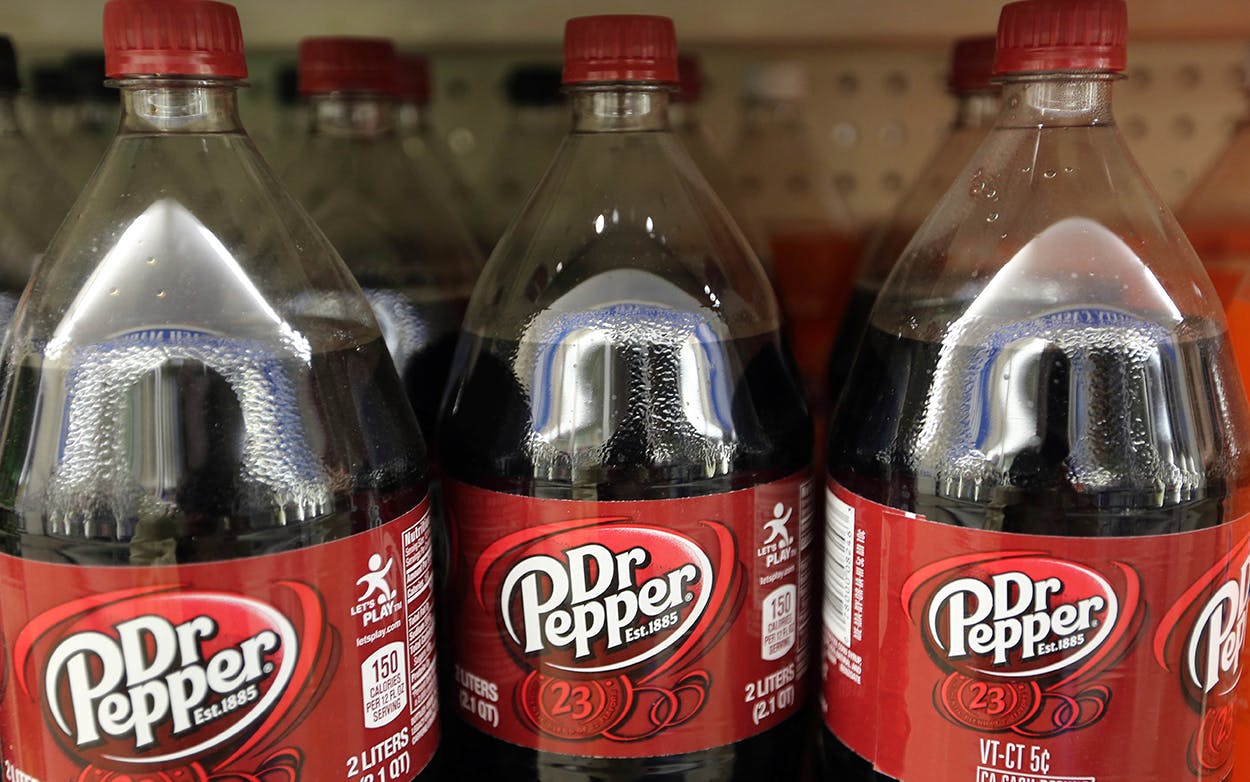Dr Pepper is a Texan, through and through. Founded in Waco in 1885, with a secret recipe divided in half and kept in two separate safe deposit boxes in different Dallas banks, its product bottled for decades in the Central Texas town of Dublin (which still houses a museum honoring the beverage), the company had been owned since 2006 by the Dr Pepper Snapple bottling group, based in Plano. As of Monday, however, a big piece of the Dr Pepper tradition is heading outside of the state: Keurig Green Mountain, the source of the K-Cup fad of the early- to mid-aughts, announced on Monday that it acquired Dr Pepper Snapple for $18.7 billion—which means that, while Dr Pepper’s HQ will likely remain in Texas, the corporate parent will be in Massachusetts.
The merger will create a new company—Keurig Dr Pepper—that’s expected to generate a cool $11 billion in annual revenue. That’s up significantly from the $6.4 billion Dr Pepper brought in 2016, but still small potatoes compared to the $41.9 billion generated by Coca-Cola or the whopping $62.8 billion earned by Frito-Lay parent PepsiCo (which brings in revenue from chips as well as soft drinks). It also creates new corporate siblings for the good doctor in the form of Krispy Kreme and Peet’s Coffee, along with the maker of ubiquitous K-Cups, all of which are owned by the JAB Holding Company.
What all of this means for Dr Pepper as a brand—or even as a uniquely Texan entity—is tough to say so early. It’s good news for shareholders, who saw the stock underperform in 2017 only to spike by a whopping 32 percent after the announcement of the sale (along with a $103.75 per share dividend). But beyond updated exhibits at the Dublin Dr Pepper Museum, the rest is hard to say. For decades, the Dublin Bottling Group was allowed to sell their own recipe of Dr Pepper within a 44-square-mile distribution radius, but in 2011, the corporate giant filed a trademark suit, and Dublin Dr Pepper went away—perhaps the new corporate parents could find a way to work with the Dublin “bootleggers”once more.
One thing that’s unlikely to change, though, is the cultural role that Dr Pepper plays in Texas life. Baylor will continue to hold its weekly Dr Pepper Hour for students every Tuesday (even if Dr Pepper only supplanted Coke’s place in that particular piece of student life in the seventies); the museum will remain in Dublin; Texans will likely still—as Leo Janos wrote in the first issue of Texas Monthly back in 1973—drink a Dr Pepper “every three days, on the average, every man, woman and child in the state.” The trademark information on the back of the bottle may change, but as long as the recipe remains locked in those Dallas banks, our enthusiasm for the soda will remain.








